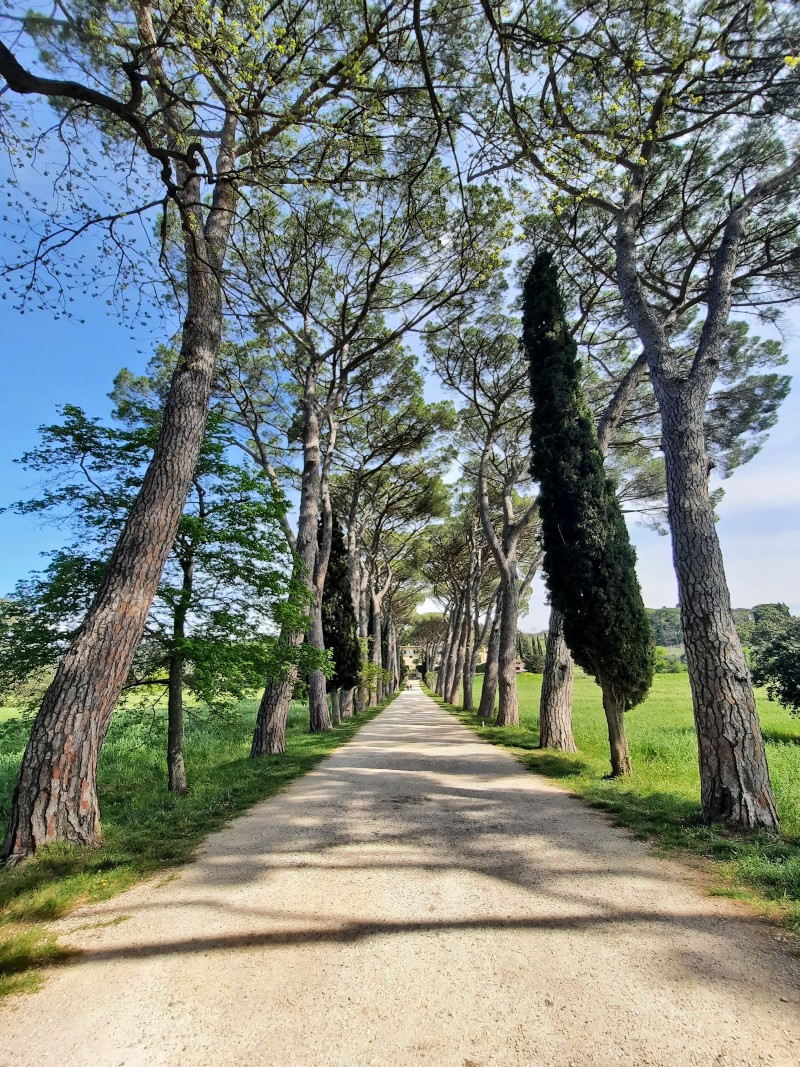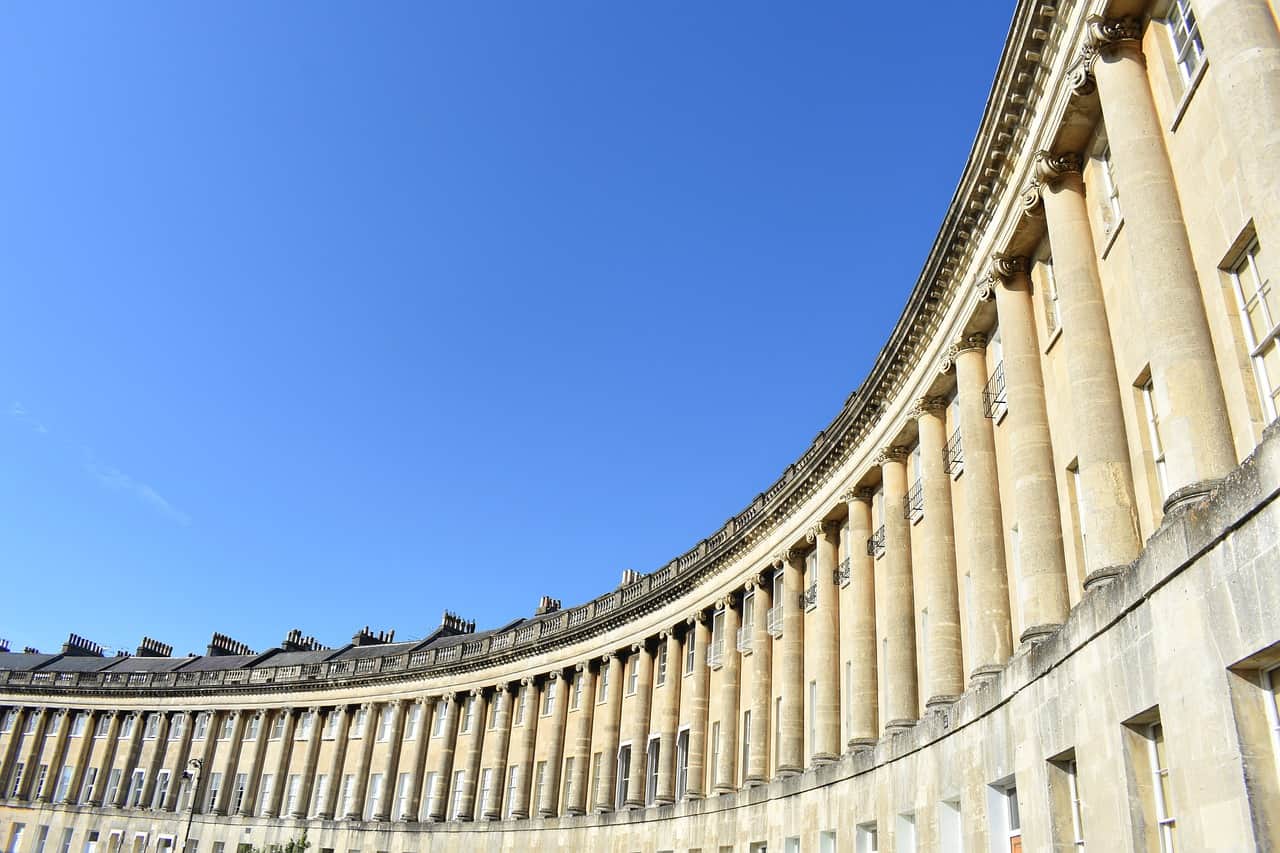
By Anne McCarthy
Literature lovers love exploring London and its surrounding areas because there is so much to experience, and that includes The Canterbury Tales author Geoffrey Chaucer’s Canterbury!
From Sir Arthur Conan Doyle’s Sherlock Holmes to J.K. Rowling’s Harry Potter and Roald Dahl’s exceptional cast of characters, England is the place to be for book lovers. (Check out our article featuring the 9 Best Bookstores in London.)
Before you head out to UNESCO World Heritage Site and city of Canterbury in Kent, be sure to get acclimated to the UK in style: By booking one of our bestselling London bike tours!
Our One Hour Westminster Cycle Tour is a great way to maximize your time in London and see some of the major highlights in central London before zipping off to other areas, like Canterbury. On this tour, your fun and knowledgeable guide will lead you around to Londontown highlights, including the one and only Big Ben, The Houses of Parliament, Buckingham Palace, and Westminster Abbey.
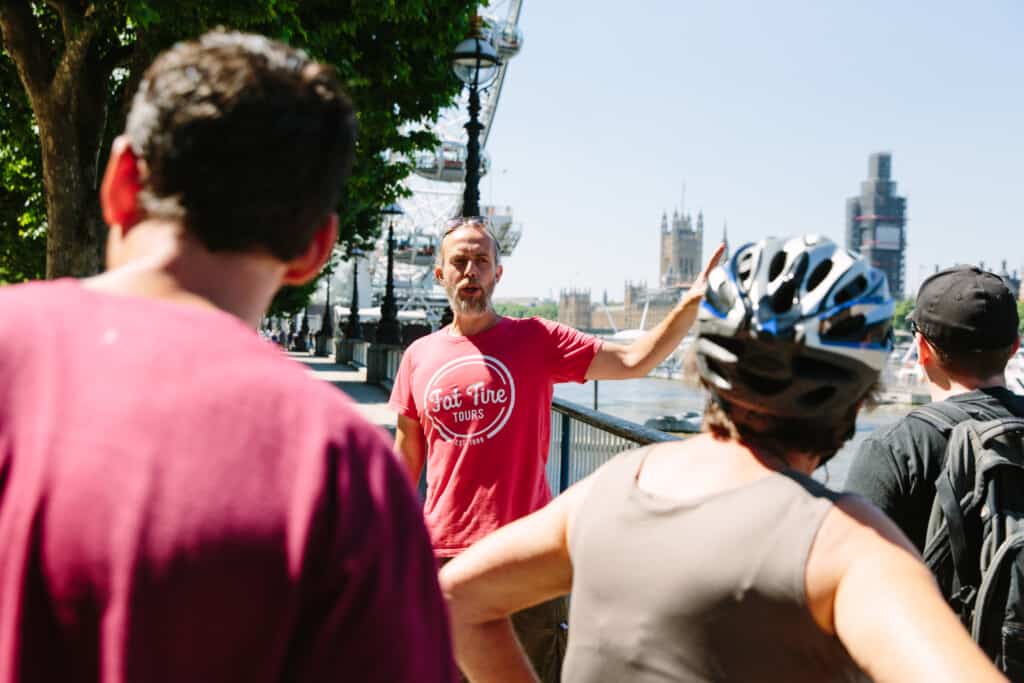
Who Was Geoffrey Chaucer? What is The Canterbury Tales?
Geoffrey Chaucer was a native Londoner. Born in London in 1342, the esteemed writer was the son of a wine merchant. Chaucer was part of King Edward II’s court, and the king appointed him to a position where he oversaw taxes on wool and leather goods that entered London. Chaucer’s greatest claim to fame, however, is not his tax work but his artistic endeavors. Chaucer wrote the hugely popular––and enduring––The Canterbury Tales.
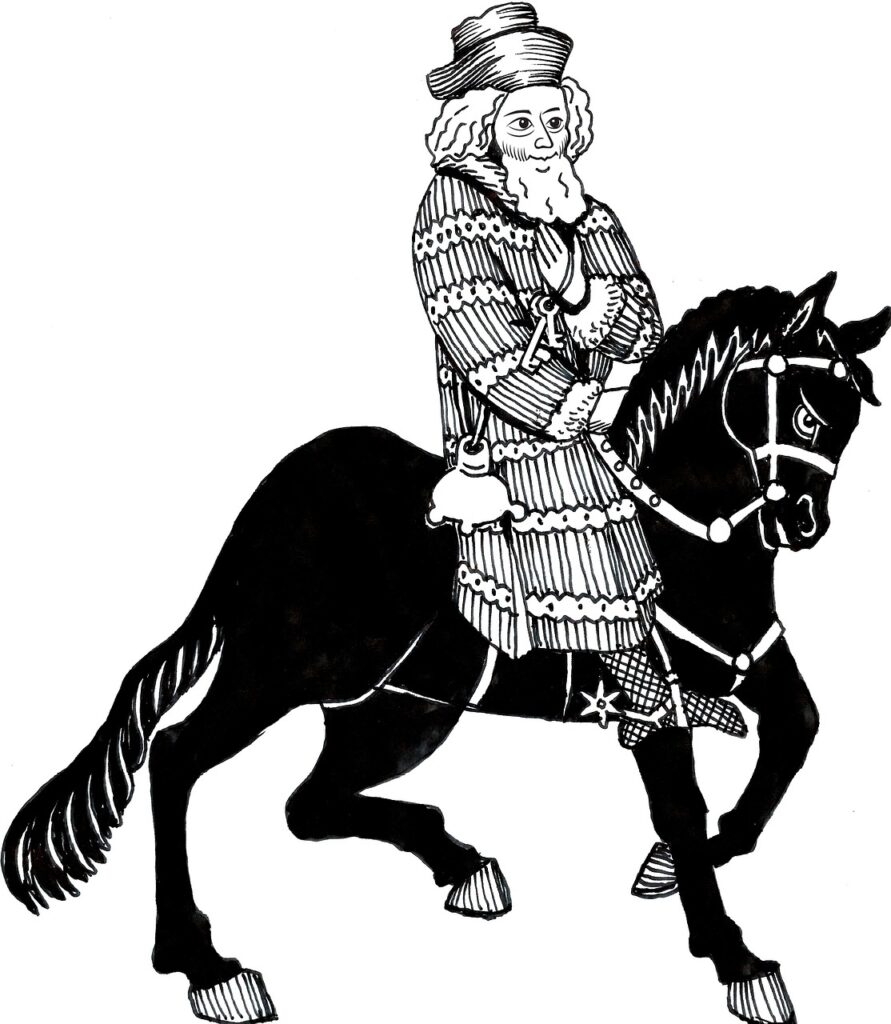
The story details the experiences of a group of travelers who journey from London to Canterbury to visit the Canterbury Cathedral and pray at the tomb of St. Thomas Becket. (Becket was murdered in 1170 by knights of King Henry II while he was praying at the Canterbury Cathedral. After the murder, he was made a saint.)
The Canterbury Tales is one of the most widely publicized books in the English language, and, astonishingly, the book has never gone out of print, despite being over 600 years old. Chaucer wrote the book between 1387-1400. At the time he wrote it, Latin and French were considered the languages of culture and sophistication, but Chaucer instead wrote the book in a more common language of the time: Old English.
Chaucer’s Canterbury
During the author’s era, the city of Canterbury was best known for the Cathedral there. People from all walks of life came from all over England to visit the Canterbury Cathedral. Pilgrims making the journey in the 1300s to experience the Cathedral would’ve stayed in the area in inns and various lodging options in the center of Canterbury.
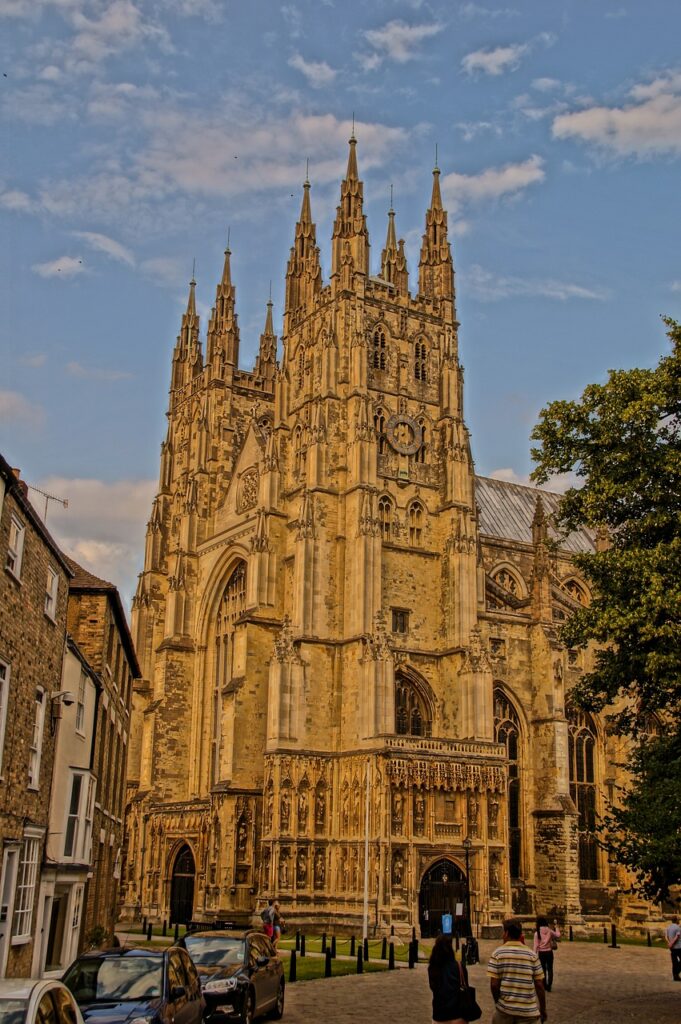
The Cathedral boosted the local economy, too, apart from the extra money coming in from the cathedral visitors. The Cathedral also provided jobs to locals. At the time Chaucer was writing The Canterbury Tales, the Cathedral’s nave as being rebuilt, and the refurbishment provided jobs to Canterbury locals.
In the fictional journey detailed in Chaucer’s The Canterbury Tales, the pilgrims travel from the Southwark area of London, beginning at the Tabard Inn, from which point they make their way to Canterbury. The journey outlined would’ve taken the travelers three to four days at the time.
To pass the hours and days on the voyage, the travelers took turns telling stories to entertain each other. One of the unique aspects of The Canterbury Tales (which Chaucer never even fully completed!) is how it shows a broad range of class and cultural standing. In the book, the pilgrims going from the Tabard Inn in London to Canterbury range from a humble cook, to an upper class knight. The work is an accurate reflection of medieval life, which helps the reader imagine what it may have been like at that time.
Visiting Canterbury Today: Trains from London & the Canterbury Cathedral
While it may have taken three to four days to reach Canterbury from London in the 14th century, that’s thankfully not the case in 2024. It’s a mere 54 miles from London, and you can get to Canterbury from London by train, bus, or car. Trains depart London for Canterbury from London Victoria, London Bridge station, and London St. Pancras, and tickets start at around £15.
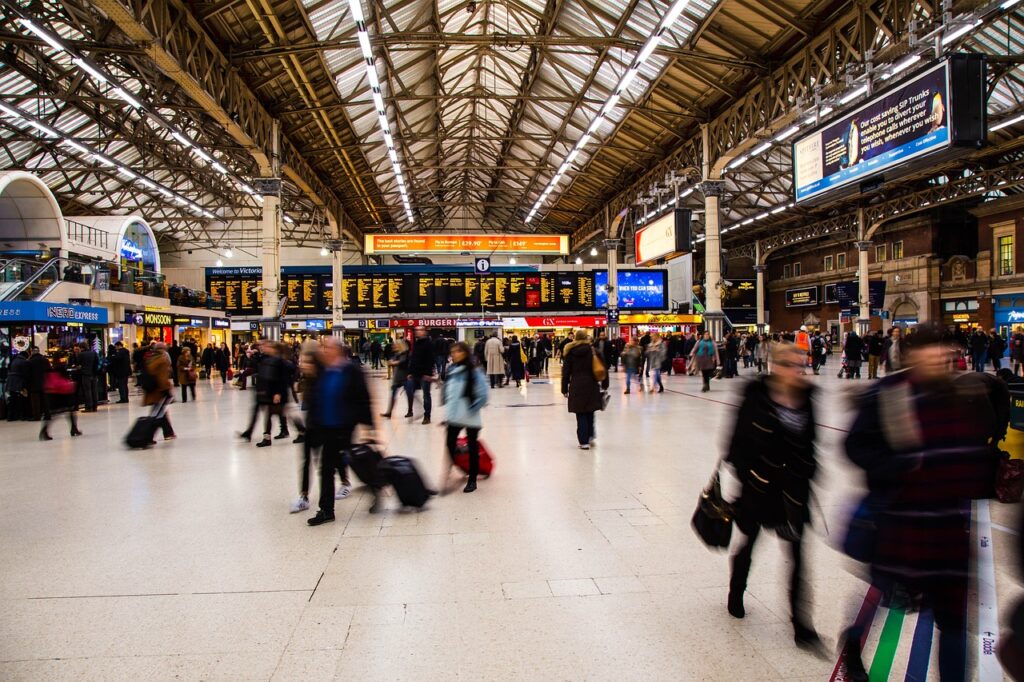
Once in Canterbury, you can check out where Chaucer’s pilgrims were going: the Canterbury Cathedral. It’s located at: Cathedral House, 11 The Precincts, Canterbury CT1 2EH. You can visit the Cathedral Monday to Saturday from 9 am to 5 pm (the last admission is at 4 pm). Sunday, the visiting hours are from 11:30 am to 5 pm. Book your Canterbury Cathedral tickets online or day-of at the visitor center. Entry costs £17 for adults, and it’s free to enter for children 17 years old and under.
The Cathedral was founded in 597 AD by St. Augustine, who was sent by Pope Gregory the Great as a Christian missionary. Today, it remains one of the most-visited historical places in all the United Kingdom. The Cathedral has been referred to as “England in Stone,” and the place of worship has been a center point for various cultural events, as well as upheavals, throughout the centuries. The Cathedral serves as a final resting place for people from saints to British royals. Of particular note are the Cathedral’s stained-glass windows and beautiful architecture.
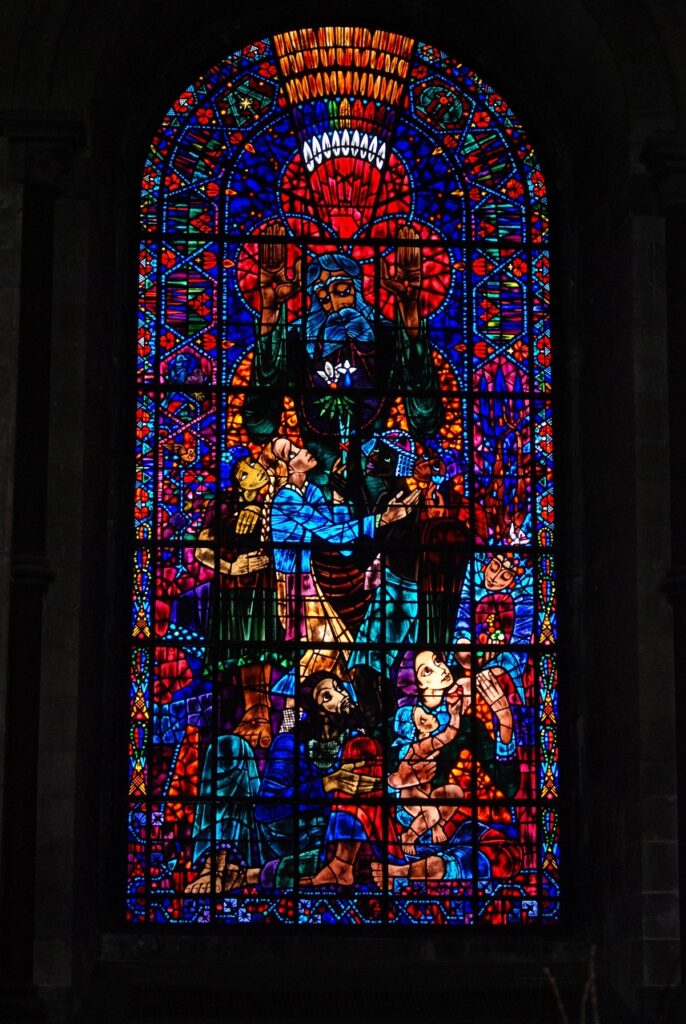
Other Canterbury Points of Interest
You may also want to visit the Tombs of the Black Prince in the Canterbury Cathedral, or the Trinity Chapel, was built to house the shrine of Archbishop Thomas Becket. For fans of Geoffrey Chaucer, you’ll definitely want to check out the large statue of Geoffrey Chaucer on the city’s main street. The statue is located at: 23 High St, Canterbury CT1 2AY, UK. Kent-based sculptor Sam Holland created the work.
Another relevant site is the Eastbridge Hospital, which has welcomed pilgrims for nearly 1,000 years. The beautifully restored chapels and dining hall at Eastbridge Hospital are worth exploring, too (provided the building is open to the public at the time of your visit). The hospital long provided shelter to children, soldiers, and pilgrims. Today, it’s a home for older people. The Eastbridge Hospital is located at: 25 High Street, Canterbury CT1 2BD.
In The Canterbury Tales, Chaucer mentions a famous hostel frequented by pilgrims called The Chequer of Hope. Today, the site of the hostel is home to a sweets shop, located at: 1 High Street, Canterbury CT1 2JH.
When you’re back in London after checking out all the historical glory of Canterbury, come visit us for a tour at Fat Tire Tours London!
Anne McCarthy is the Editor in Chief of the Fat Tire Tours Blog. She is a contributing writer to the BBC, The Washington Post, The Guardian, Variety, Wired, and many more. She splits her time between the U.S. and Europe.
